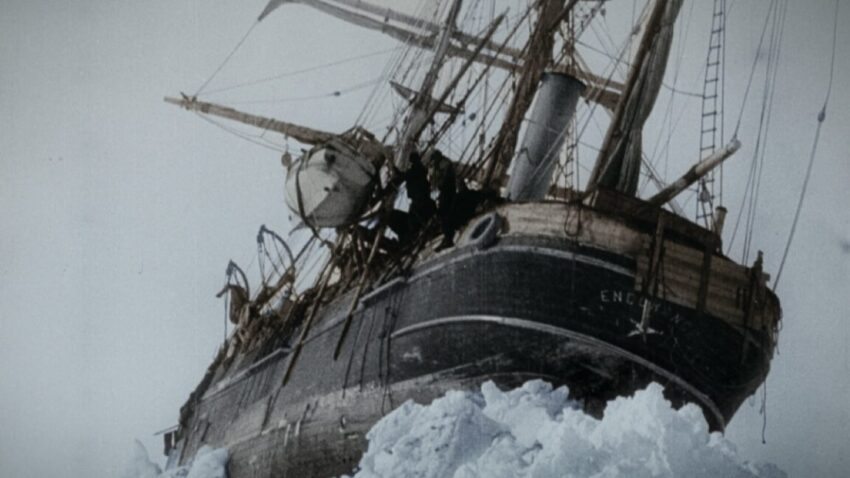
here s the real reason endurance sank A recent analysis sheds new light on the sinking of Sir Ernest Shackleton’s ship, Endurance, revealing that it succumbed to the crushing forces of Arctic ice rather than a single catastrophic event.
here s the real reason endurance sank
The Historic Voyage of Endurance
In 1915, British explorer Sir Ernest Shackleton embarked on an ambitious expedition to cross Antarctica. His ship, the Endurance, was designed for polar exploration, and Shackleton was confident in its capabilities. However, the voyage took a dramatic turn when the vessel became trapped in pack ice in the Weddell Sea, forcing the crew to endure a harrowing ordeal that lasted for months.
The narrative surrounding this famous expedition has often emphasized two main points: the strength of the Endurance as a polar ship and the idea that it sank due to ice damage to its rudder. These assumptions have been widely accepted, contributing to the mythos surrounding Shackleton’s leadership and the crew’s survival against the odds.
New Insights from Recent Research
However, a recent study published in the journal Polar Record challenges these long-held beliefs. The research, led by Jukka Tuhkuri, a polar explorer and researcher from Aalto University, provides a comprehensive analysis of the conditions that led to the sinking of the Endurance. Tuhkuri’s findings suggest that the ship would have sunk regardless of the state of its rudder, as it was ultimately overwhelmed by the cumulative compressive forces exerted by the surrounding ice.
Understanding the Forces at Play
The study indicates that the Endurance was not structurally equipped to withstand the immense pressures generated by the shifting ice. Tuhkuri emphasizes that the ship’s design, while advanced for its time, did not account for the extreme conditions it faced in the Weddell Sea. The ice surrounding the vessel was not merely a passive element; it actively exerted pressure on the hull, leading to its eventual demise.
According to Tuhkuri, “The ship was crushed by the compressive forces of the ice, not by a single event like the loss of the rudder.” This revelation underscores the complexity of the situation faced by Shackleton and his crew, who were navigating a treacherous environment with limited resources and knowledge of the ice dynamics.
Shackleton’s Decision to Proceed
One of the most intriguing aspects of Tuhkuri’s analysis is the implication that Shackleton likely understood the risks involved in his expedition. Despite being aware that the Endurance was not designed to withstand the extreme pressures of the Antarctic ice, he chose to embark on the journey. This decision raises questions about the motivations behind Shackleton’s leadership and the allure of exploration during that era.
Shackleton’s ambition to achieve a trans-Antarctic crossing was not merely a scientific endeavor; it was also a personal quest for glory and recognition. The risks associated with such an expedition were well-known among polar explorers, yet the desire to push boundaries often outweighed the potential dangers. Shackleton’s choice to proceed with the voyage, despite the ship’s limitations, reflects a complex interplay of ambition, courage, and perhaps a touch of hubris.
The Discovery of the Wreck
The Endurance was lost to the depths of the Weddell Sea for over a century until its wreck was discovered in March 2022 during the Endurance22 expedition. This mission aimed to locate the ship and document its condition, providing a unique opportunity to study the vessel and the circumstances surrounding its sinking.
Jukka Tuhkuri was one of the scientists involved in the Endurance22 mission, which utilized advanced underwater technology to locate and capture images of the wreck. The findings were remarkable; the Endurance was found in pristine condition, largely due to the cold temperatures and the absence of wood-eating microbes in the region. Mensun Bound, the exploration director for the Endurance22 expedition, remarked that the shipwreck was “in a brilliant state of preservation,” making it one of the finest examples of a polar shipwreck ever discovered.
The Role of Environmental Factors
The preservation of the Endurance provides valuable insights into the environmental factors that contribute to shipwrecks in polar regions. The cold waters of the Weddell Sea have created an environment where organic decay is significantly slowed, allowing the ship to remain largely intact. This preservation offers a unique opportunity for researchers to study the construction and materials used in early 20th-century polar vessels.
Furthermore, the condition of the wreck allows scientists to better understand the historical context of polar exploration and the challenges faced by explorers like Shackleton. The Endurance serves as a tangible reminder of the risks involved in such expeditions and the resilience of the human spirit in the face of adversity.
Implications for Modern Exploration
The revelations surrounding the sinking of the Endurance have broader implications for modern exploration and our understanding of polar environments. As climate change continues to impact polar regions, the dynamics of ice and its interaction with vessels are becoming increasingly important. Understanding the forces that led to the Endurance’s sinking can inform current and future expeditions, helping to mitigate risks and enhance safety measures.
Moreover, the study of the Endurance wreck emphasizes the importance of historical context in contemporary exploration. As scientists and explorers venture into increasingly challenging environments, the lessons learned from past expeditions can provide valuable guidance. The Endurance serves as a case study in the complexities of navigation, the unpredictability of nature, and the importance of thorough preparation.
Stakeholder Reactions
The findings of Tuhkuri’s research have sparked interest among historians, polar explorers, and the general public. Many are intrigued by the new perspective on Shackleton’s expedition and the factors that contributed to the sinking of the Endurance. The study has prompted discussions about the responsibilities of explorers and the ethical considerations involved in undertaking high-risk journeys.
Historians have noted that this fresh analysis adds depth to our understanding of Shackleton’s legacy. While he is often celebrated for his leadership and the survival of his crew, the implications of his decision to proceed with a potentially flawed vessel complicate the narrative. Some argue that this new information should lead to a reevaluation of how we view exploration and the inherent risks involved.
Public Interest and Cultural Significance
The story of the Endurance has captured the public’s imagination for over a century, and the recent discoveries have reignited interest in Shackleton’s expedition. Documentaries, books, and articles continue to explore the themes of survival, leadership, and the human spirit in the face of adversity. The Endurance’s story resonates with audiences, serving as a testament to the resilience of those who dare to explore the unknown.
As new research emerges, the narrative surrounding the Endurance will likely continue to evolve. The ship’s legacy as a symbol of exploration and endurance remains intact, but the complexities revealed by Tuhkuri’s study add layers of nuance to our understanding of this historic voyage.
Conclusion
The sinking of the Endurance is not merely a tale of survival; it is a story that reflects the challenges and complexities of polar exploration. Jukka Tuhkuri’s research offers a fresh perspective on the circumstances surrounding the ship’s demise, emphasizing the cumulative forces of ice rather than a singular event. Shackleton’s decision to embark on the expedition, despite the known risks, adds a layer of complexity to his legacy as an explorer.
As we continue to study the Endurance and its wreck, we gain valuable insights into the past that can inform our understanding of present and future exploration. The lessons learned from Shackleton’s journey are as relevant today as they were over a century ago, reminding us of the delicate balance between ambition and caution in the face of nature’s formidable forces.
Source: Original report
Was this helpful?
Last Modified: October 6, 2025 at 4:36 pm
0 views















